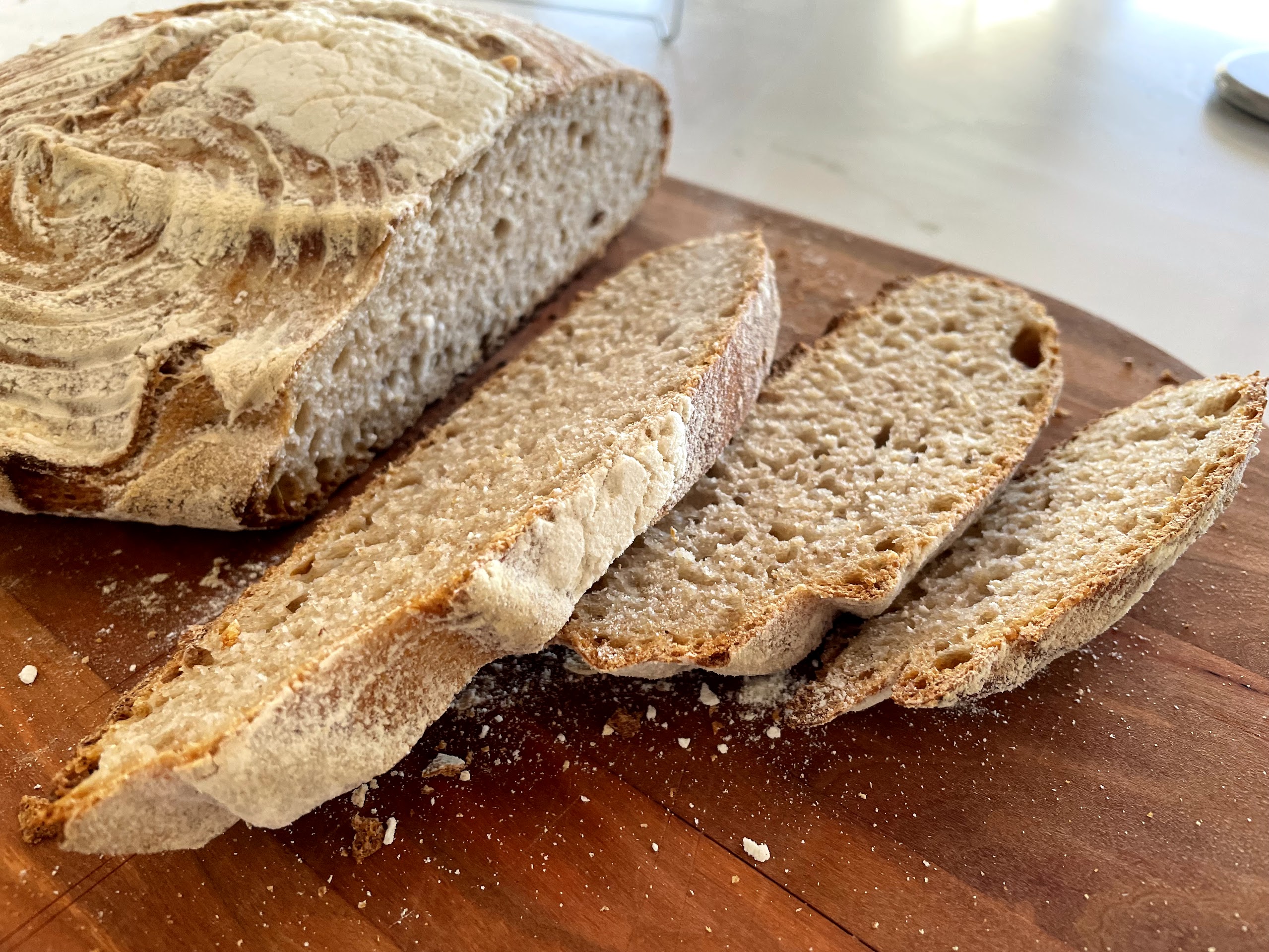
The first stage of wine fermentation involves yeast metabolizing in the must which results in the conversion of sugars to ethanol. There are many wild yeasts which can facilitate fermentation but the most common one is Saccharomyces cerevisiae which is also used in bread making (and the brewing of beer). I think this is pretty cool - the same little micro-organisms that work their magic on our wine are also the magic behind my favorite food - bread. It seemed like a fun experiment to try making a sourdough starter from the exact same yeast fermenting our wine.
It’s pretty easy to make a sourdough starter - you combine flour and water, leave in the open air for a while to (hopefully) pick up some nice local wild microorganisms (including yeast) and then start “feeding” daily. Feeding means discarding half the starter and topping up with fresh flour and water. After a day or so the yeast start multiplying. The yeast metabolize the sugars in the flour to produce carbon dioxide (and ethanol) and the whole mixture puffs itself up with CO2 bubbles, the yeast eventually consumes all the sugar from the fresh flour and needs feeding again. I joke with my kids that we have to keep feeding my microscopic pets and they fart out the CO2 bubbles. You have to feed the starter for about a week to establish a stable culture where the yeast has outcompeted any other microbes in the medium.
You can make bread with yeast alone but a sourdough starter usually also contains lactic acid bacteria [LAB]. (e.g. Fructilactobacillus sanfranciscensis, love that name!) These little microbes convert sugars to lactic acid, acetic acid and CO2 which produce some of the complex sour flavors we associate with sourdough. The super cool thing is that LAB and yeast coexist in a kind of symbiotic way in the starter. They work to make their home inhospitable to other microorganisms but very friendly for each other. Yeast produces ethanol which kills off most other stuff, but LAB like it. And LAB produce acids which, as we know given that our wine is pretty acidic too, the yeast are happy with. Yeast also produce amylase as they reproduce. I have “amylase convert starch to maltose” scarred into my long term memory from high school biology class. Guess what flour is? Lots of starch! And what do LAB eat? You guessed it - maltose! 🦠❤️🦠.
Let’s get to it!
Harvesting the yeast
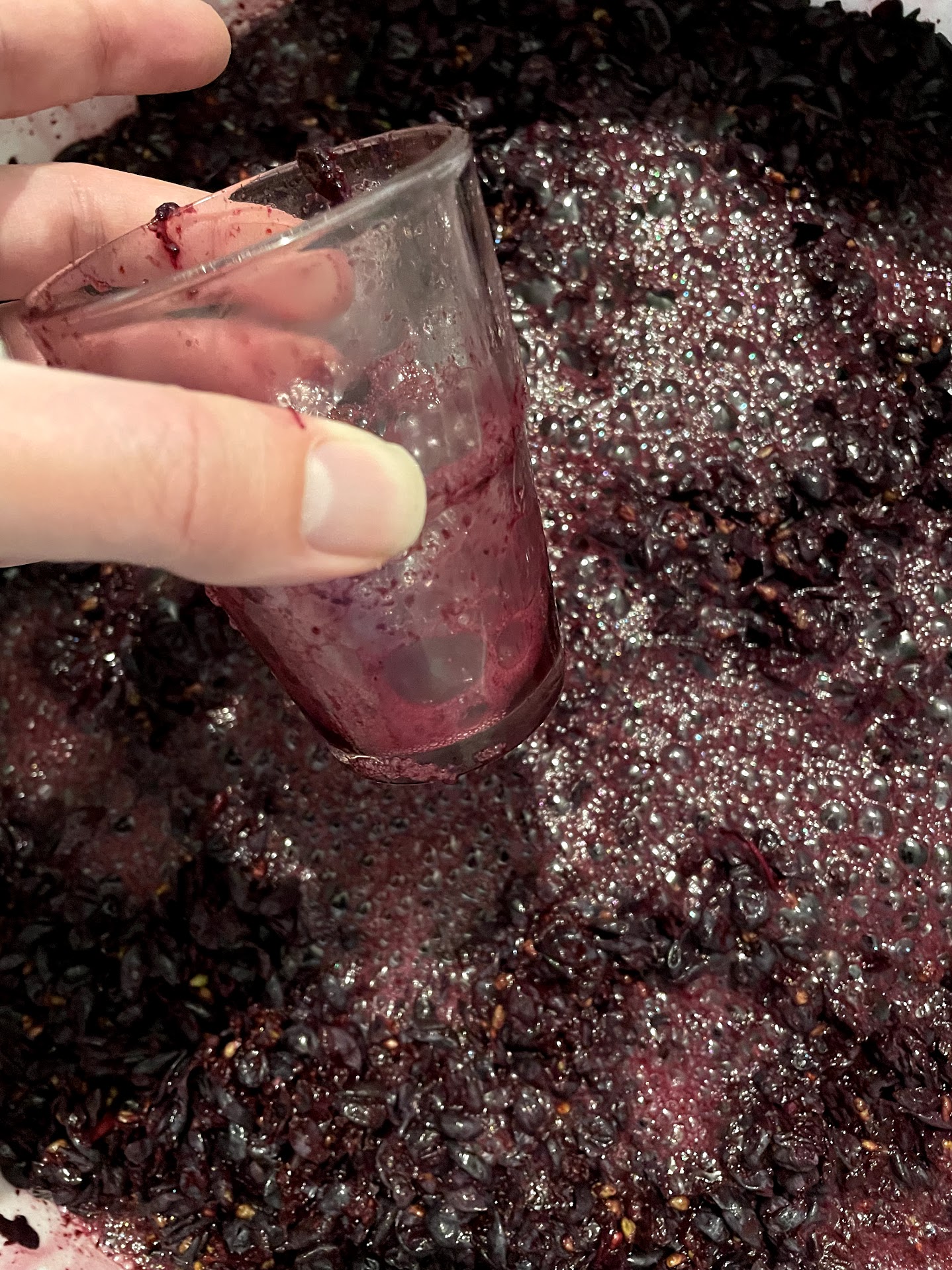
Several sourdough references recommend using grape juice to help get a regular starter going, so I was pretty optimistic that this was going to work. Immediately after punching down my wine (the 2021 Cabernet Sauvignon vintage) at the height of its fermentation I grabbed about 50ml of juice. At this stage of the wine fermentation there will be tons of yeast in every drop of must and the acidity and sugar in the juice should help give our sourdough starter a big kick start.
Mixing the first starter
Ingredients
- 100g bread flour (wholemeal recommended)
- 100g water
- ~30g juice from fermenting must
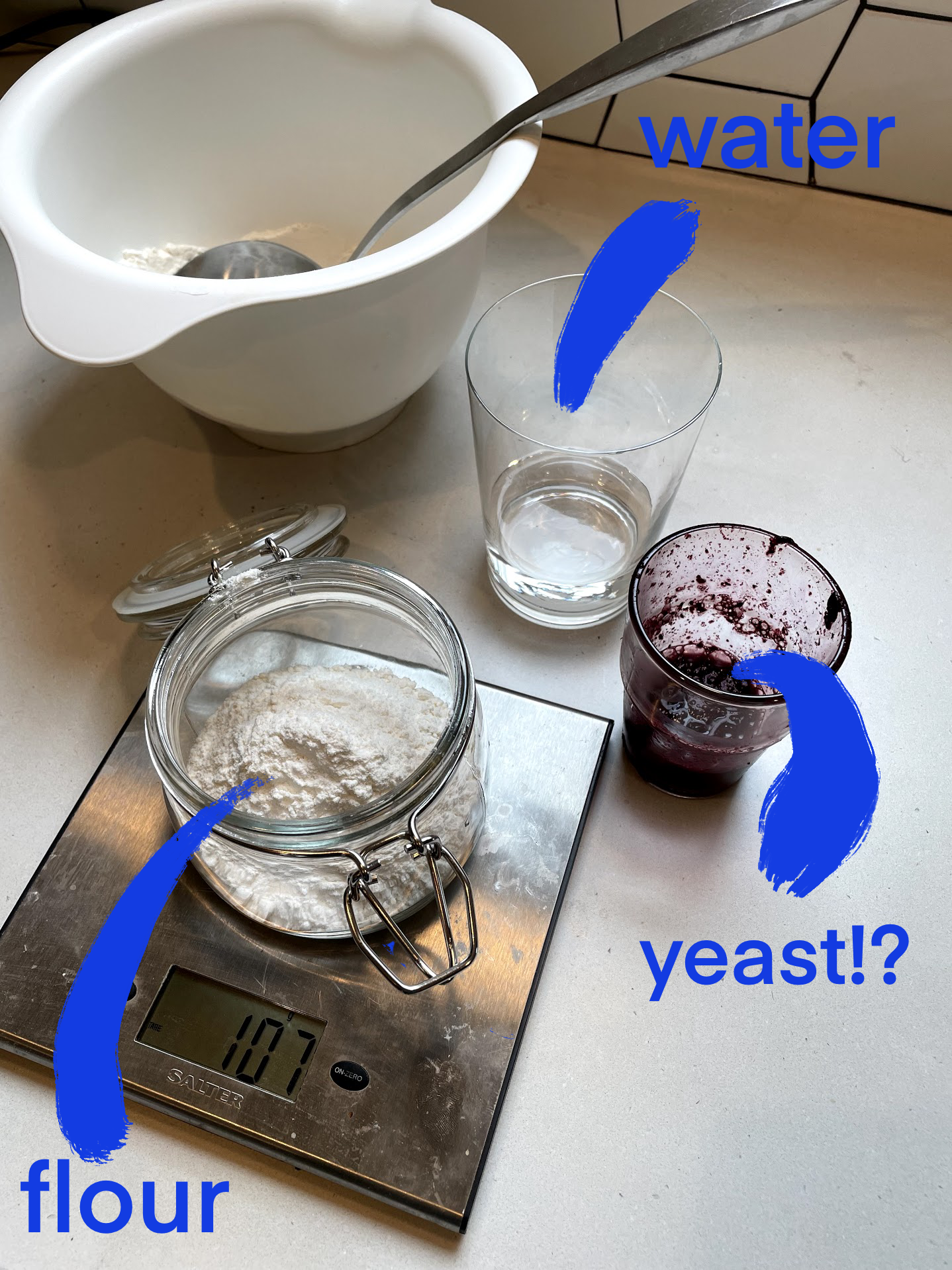
I thoroughly mixed the flour, water and yeasty grape juice together and left the container open to the air for about an hour, hoping to pick up some L. sanfranciscensis.
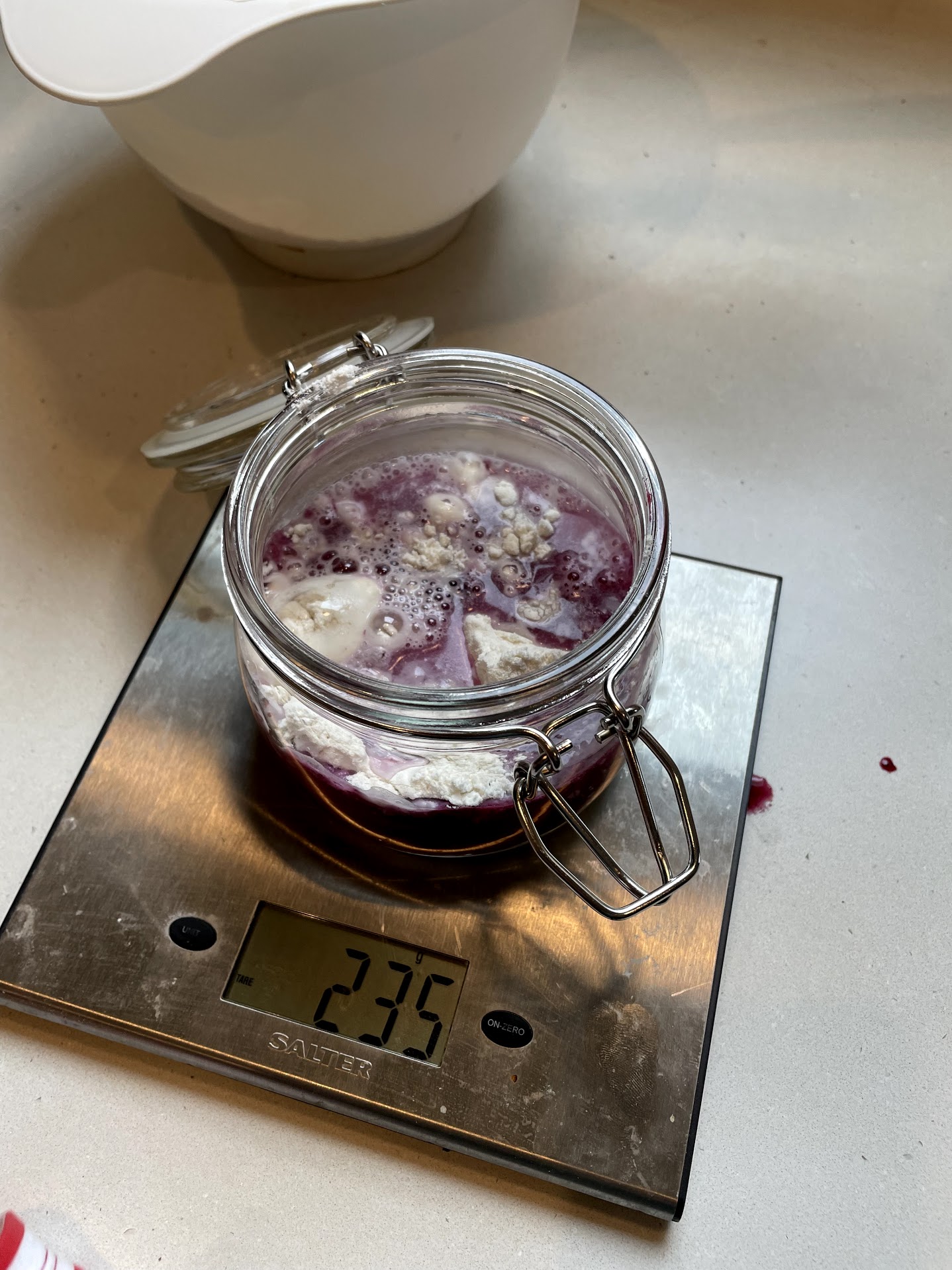
After an hour or so, I closed up the jar and left it in a warmish spot in my kitchen for the rest of the day. As you can see the initial starter looks a bit weird. It’s all purple! But before long, and much faster than simply using the flour + water + patience method, I noticed a throng of little CO2 bubbles in the starter.
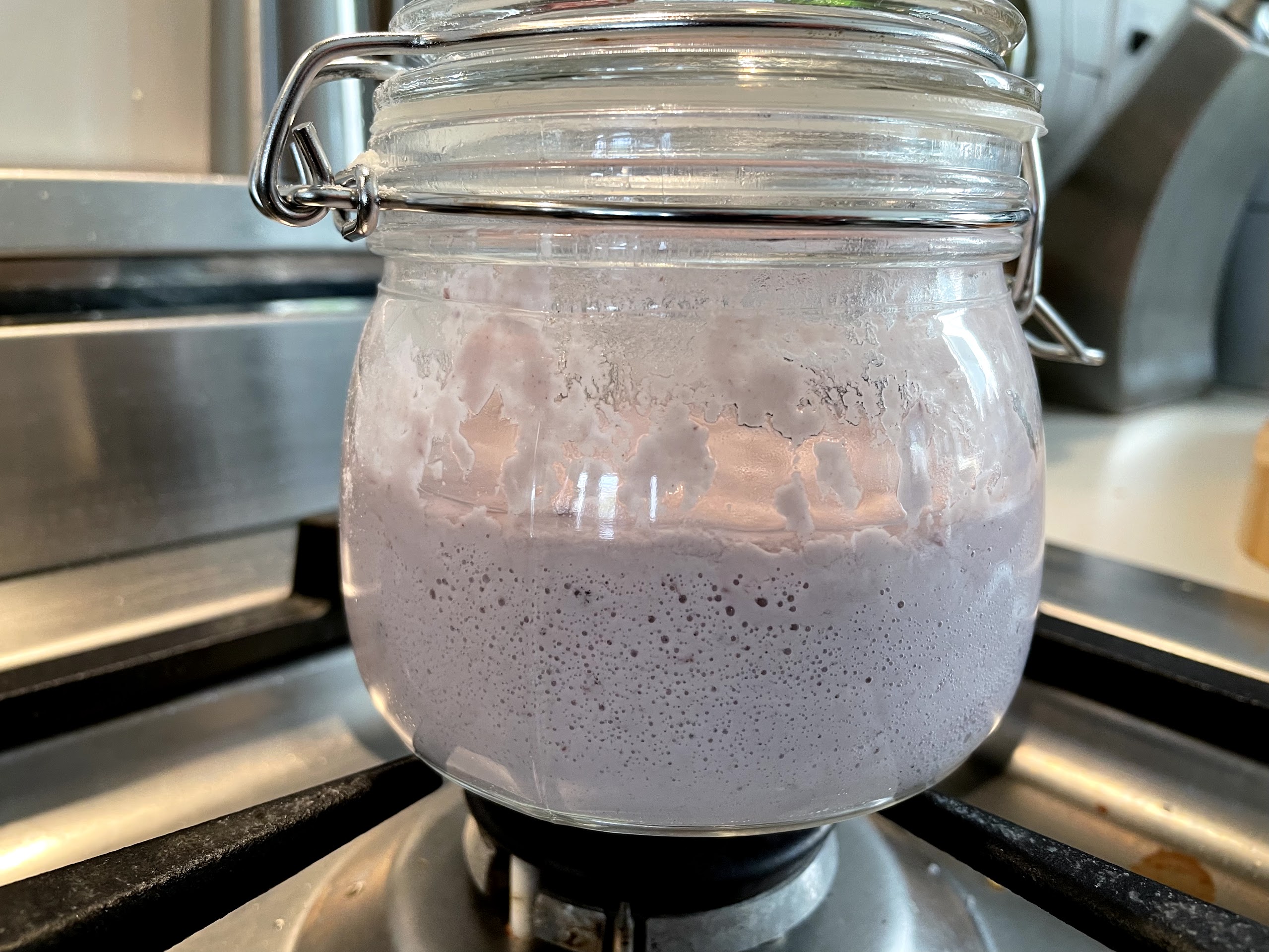
Feeding
It worked! Now a bit of patience and persistence was required. I fed the maturing starter once a day by pouring half away (leaving 100g of “yesterday’s” starter) and topping up with 50ml water and 50g flour.
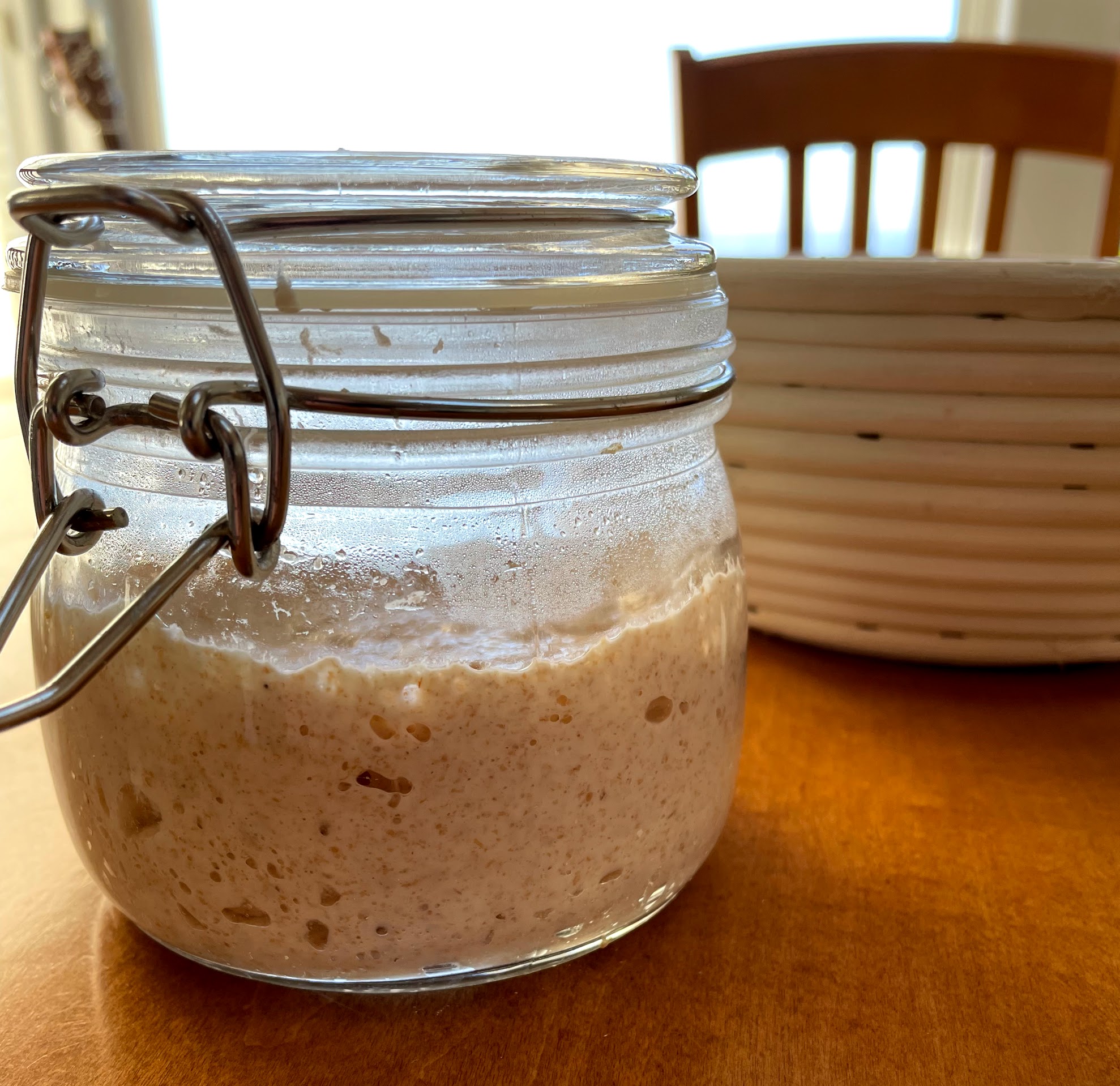 After a week of feeding, the starter is finally ready to bake with. It had a very fragrant smell by this stage. Definitely different to my regular sourdough starters. So the big question was: “Will the bread be any good?”
After a week of feeding, the starter is finally ready to bake with. It had a very fragrant smell by this stage. Definitely different to my regular sourdough starters. So the big question was: “Will the bread be any good?”
Baking a loaf, the moment of truth
There was only one way to find out! I followed my regular sourdough recipe using 150g of the wine yeast starter to seed the production sourdough. And… It baked really well - the starter did a nice job of leavening the dough. Here’s the finished product:

And the taste? It’s different to my regular sourdough - a little less sour and a little more fragrant. But it’s good! My family’s verdict: “Can you make us more tomorrow?”